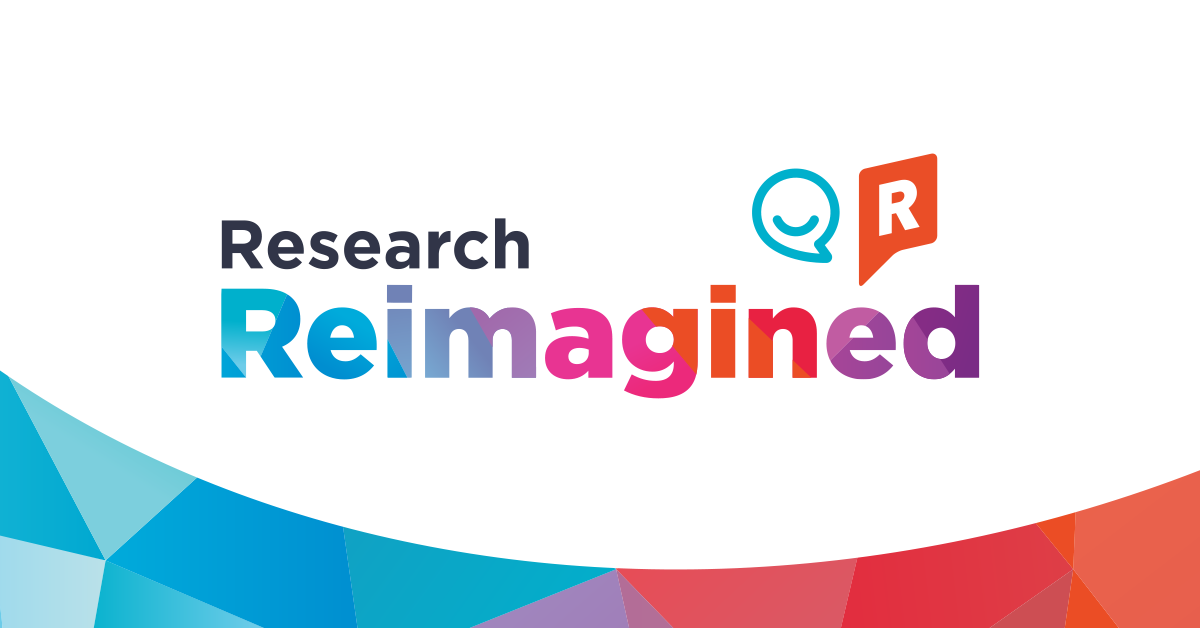
We released an e-book that goes deep on why it’s time for our industry to reimagine research. It’s tactical, technical and filled with tips that are easy to apply. The eBook, and the larger campaign we inspired by a startling fact:
Did you know that according to research completed by the Insights Association, 1 in 3 researchers rate their jobs as “highly stressful” and over half experienced “burnout” in 2023?
That is a serious problem that is antagonized by some key challenges our friends at Greenbook identified. Namely:
Clearly something must change. The status quo of market research has a strangle hold on this industry.
New methods and new technology now make it possible to re-imagine research; keeping the same rigour and sophistication, but making it conversational, personalized and engaging. We call it the third wave of market research.
To support this transition into the third wave of modern market research, we identified 5 areas of opportunity. We also connected with thought leaders and innovators to find out what “research reimagined” means to them. Their ideas have been shared here. In almost every case they echoed our recommendations; further validating the immediate need to spearhead change.
In this blog I’ll briefly summarize the key points outlined in the eBook. Specifically:
To get authentic, unfiltered feedback from respondents, you must get them out of test taking mode and by embracing more conversational methods.
Here’s three ways to make market research uniquely conversational:
To help researchers on this journey, we created 8 Principles of Conversational Research that can be used to re-imagine your research. They are summarized below. If you want to go deeper check out the e-book written by founder of Reach3 Insights and pioneer of Conversational Research Methods, Matt Kleinschmit.
Mobile phones – specifically the use of SMS and social is the primary connection between consumers and the rest of the world. Here’s 6 Reasons why SMS helps researchers uncover deeper richer insights.
|
SMS stifles fraud |
The time and budget required to run discrete quant and qual projects is a luxury few can afford. But they can’t sacrifice quality either. Qual-quant approaches supplemented by video deliver substantial savings in time, money, and effort.
Quantitative rigor + qual at scale
Quantitative research scales but often lacks context that can be uncovered in Qualitative research, allowing researchers to explore complex questions with a nuanced understanding. Although traditionally more time-consuming, advancements in transcription and coding software have expedited these processes, allowing for quicker turnarounds and reduced labor costs. The incorporation of video as a medium in research methods is a leap forward in data richness and engagement.
The synergy between quant and qual methods, enhanced by video, means that researchers can work smarter, not harder. The comprehensive insights gained through this integrated approach can lead to quicker decision-making and the formulation of more definitive recommendations couched in quat data, brought to life with video and other qual.
5 key benefits of quali-quant + video agile learning streams:
The root of compelling story telling is high-quality insights and feedback. However strong evidence is not always enough to inspire action. As Debra Logan, research vice president at Gartner explains, “It’s not enough to manage data and create insights. These activities must deliver measurable business outcomes.”
Not only do researchers needs to distill and synthesize the data so it is accessible and actionable, but they also need to help focus their leadership on the data that matters.
With this strategic imperative in mind, we put together a simple storytelling framework anchored around 6 simple questions.
“Stories are the oldest form of learning that we have as humans. It’s also the first style of learning we’re exposed to as children. Our brains are pre-wired to connect to stories in a way they are not pre-wired to connect to tables and graphs.”
Jason Cook, Senior Manager of Research and Design – Dell Technologies Services CX
The near to mid-term objective of AI is to embrace its potential to alleviate the burden of manual, time-consuming tasks, allowing researchers to channel their efforts into high-value activities. This strategic reallocation of resources from repetitive and routine to tasks is the cornerstone of optimizing research processes with AI.
AI, especially when integrated with conversational interfaces and SMS technology, can enhance the participant experience. By employing AI in the authoring process, researchers can refine survey content, adjust tones to suit diverse audiences, and ask intelligent follow-up questions.
AI excels at distilling vast quantities of information into coherent, actionable insights At Rival, we encapsulate this capability as “speed to insight,” enabling researchers to test hypotheses, iterate on findings, and launch initiatives with unprecedented agility.
Parting thoughts
The demands and expectations on research teams mean that traditional methods are no longer sustainable. It's time to break free from the constraints of status quo and embrace the key areas of opportunity we've outlined above. Embrace the principles of conversational research, prioritize the participant experience, leverage the full potential of mobile, video and AI and finally, craft compelling stories that resonate with your audience.
Subscribe to our blog to receive new insights on market research trends.

No Comments Yet
Let us know what you think